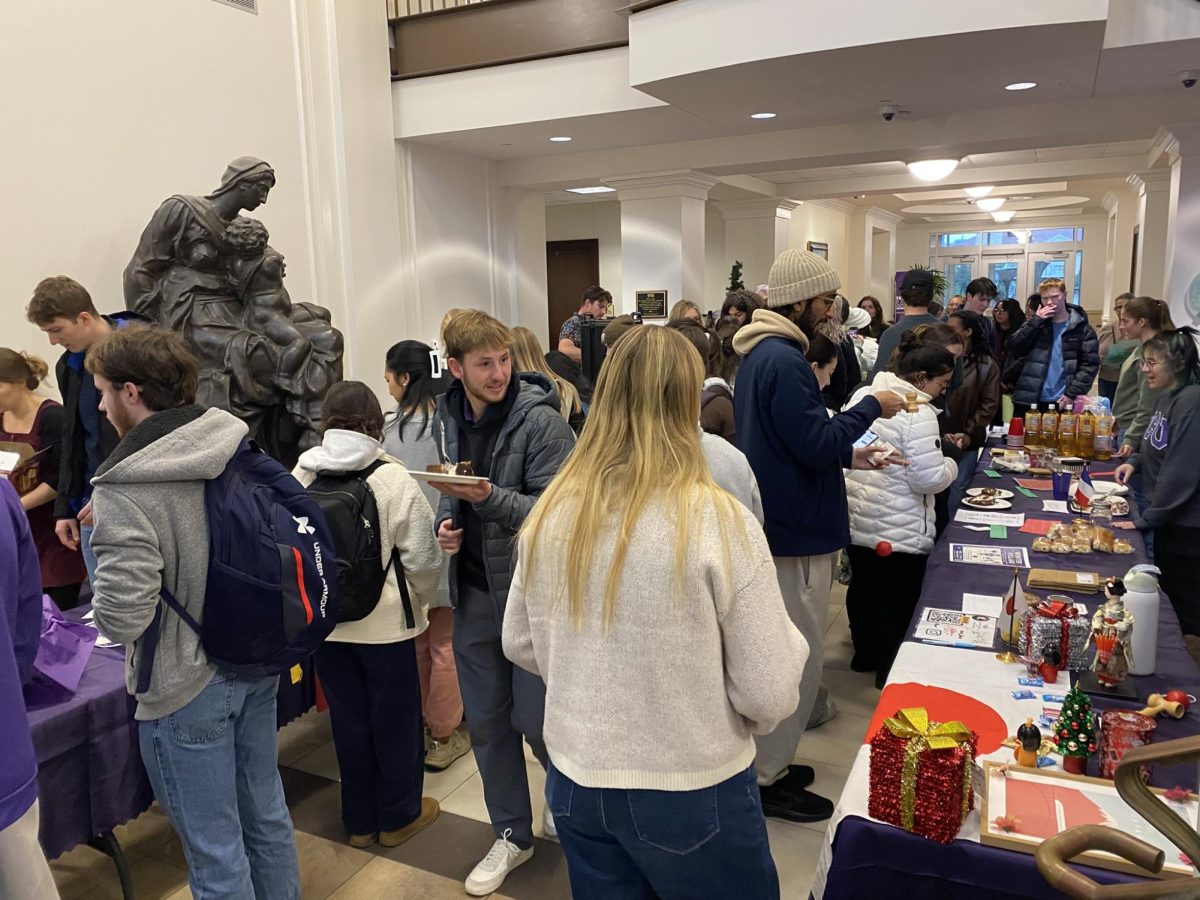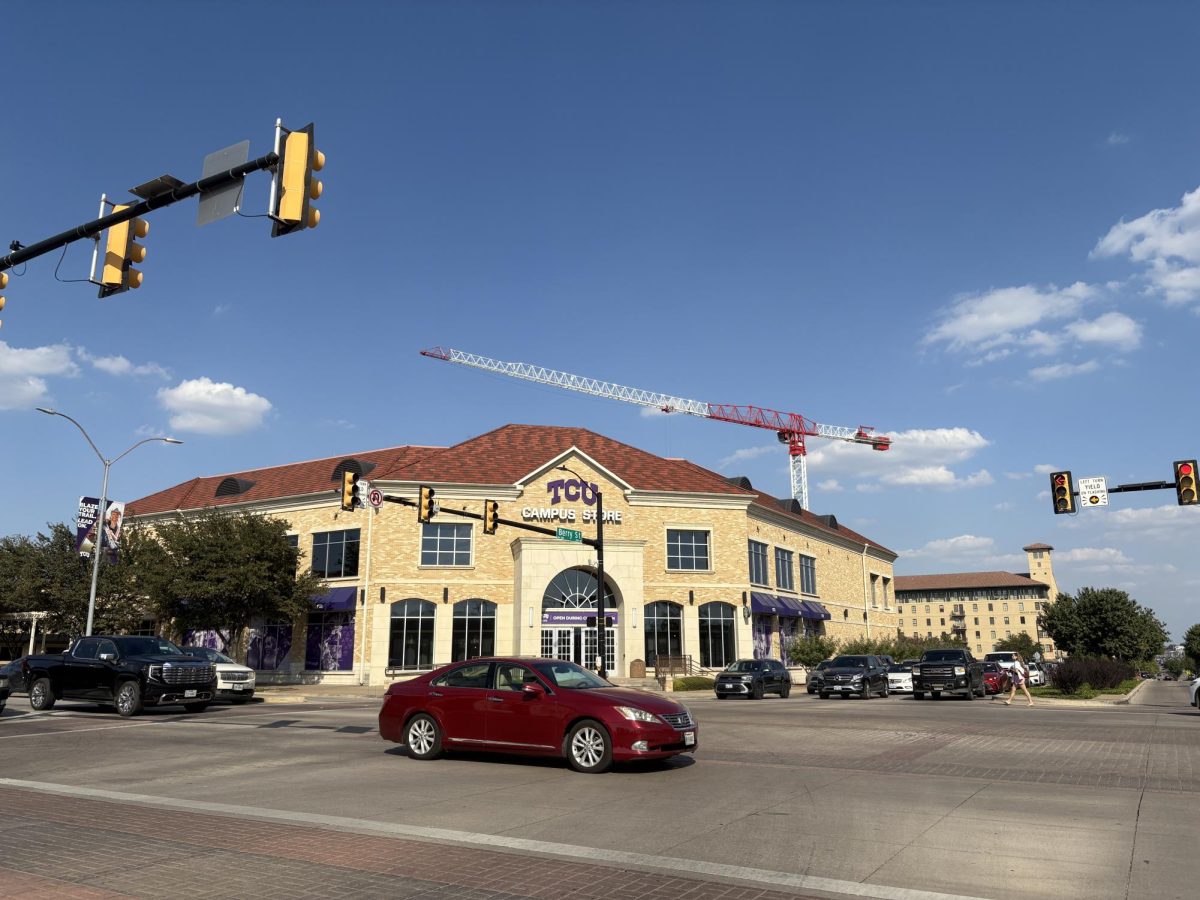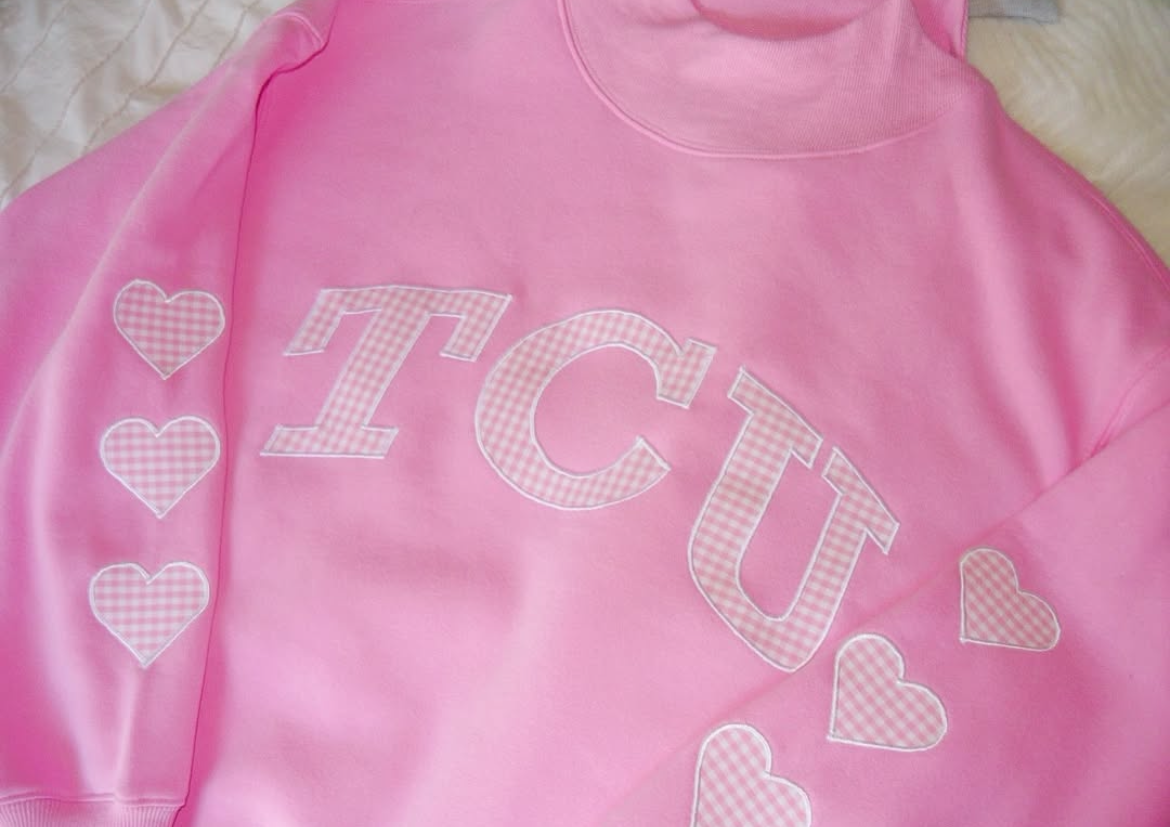Although an urban campus, TCU sprawls across 277 acres and supports a variety of species.
Egrets fish in the creek that winds behind the ball fields. Resident hawks roost in the large oak trees near Sadler, Reed and Clark Halls. Skunks, raccoons and the occasional fox roam the campus.
Greg Burdick, horticultural supervisor for the university, said a raccoon sometimes sleeps in the branches of a large elm beside the creek. He then begins tossing a few banana peel slivers toward the water.
“There’s a huge turtle that lives here. His head is about as big as my hand,” he said. “We feed him our banana peels.”
The steeple of Robert Carr Chapel is a favored perch for hawks.
John Tisdale, associate director of the Schieffer School of Journalism and Strategic Communication, said he recalls spotting a raptor scanning the campus.
“It was just sitting there kind of looking for its next meal,” Tisdale said. “Usually they feed at dusk, but this was right in the middle of the day.”
Burdick said he has seen the hawks feed on campus wildlife.
“I’ve seen one sit there and eat the breast out of a pigeon on the ground. They will only eat the breast meat. They’ll leave the rest of it lay,” he said. “You’ll see them pick up a squirrel.”
Watching a hawk hopping around, flapping its wings, chasing a squirrel through jasmine is entertaining, Burdick said.However, birds such as pigeons, doves, crows, egrets and grackles can be a problem.
“The worst problem is on the east side. They’ll defecate severely on some of the sidewalks,” he said. “Every day for about two hours, from 4-6 p.m., we have a vehicle that has an air horn and its job is to drive around and scare the birds.”
Then there are the squirrels that root through flower beds. With 62 beds holding everything from begonias and petunias to zinnias and sweet potato vines, they have plenty of choices.
Machine operator Mark Carter, who is part of the grounds crew, said he rescued an injured Cooper’s hawk. The bird’s injuries were mendable and it was rehabilitated before being releasing back into the wild.
Carter said more species of animals reside on campus than people notice on a daily basis, including colonies of feral cats.
There is even a crumpled bag of cat food at the greenhouse near the creek.
In addition to feeding the strays, workers sometimes use cat food to trap skunks, Burdick said. They are careful to cover the cages to keep the skunks as calm as possible, he said.
And there are critters that slither instead of walk. Burdick said, water moccasins and copperheads lurk along the creek.
“You can’t turn your back in this tall grass,” he said. “You always work together.”




